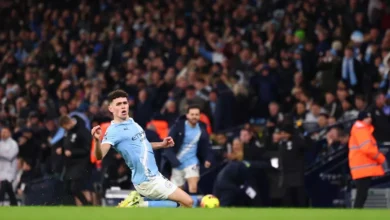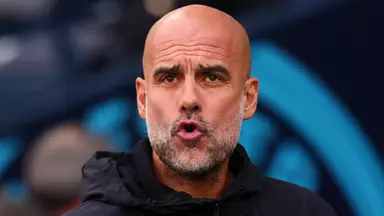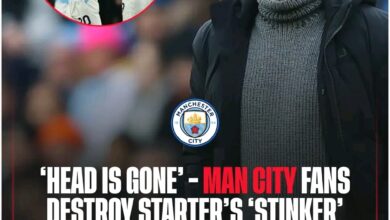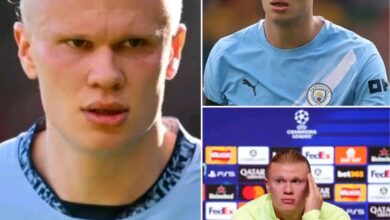Liverpool’s Strategic Pivot: From Ekitike to Mateta – A Comprehensive Transfer Analysis
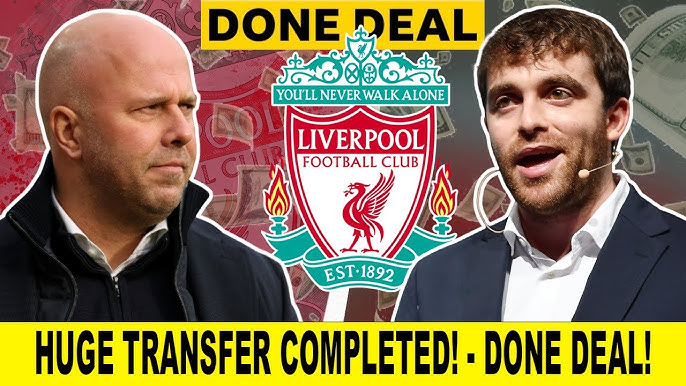
Liverpool Football Club’s transfer strategy has undergone a significant recalibration following the unexpected collapse of their pursuit of Hugo Ekitike, the French striker who had emerged as a primary target for the Reds’ attacking reinforcement plans. The Merseyside giants, who have been methodically building their squad under Jürgen Klopp’s guidance and now continuing under new management, had identified Ekitike as a crucial component in their offensive machinery for the upcoming seasons.
The 22-year-old French international had captured Liverpool’s attention through his remarkable renaissance at Eintracht Frankfurt, where he successfully rehabilitated his career after a disappointing stint at Paris Saint-Germain. Ekitike’s journey from the periphery of PSG’s star-studded squad to becoming one of the Bundesliga’s most promising talents represented exactly the kind of transformation story that Liverpool’s recruitment team has historically excelled at identifying and capitalizing upon.
During his time in Germany, Ekitike demonstrated the clinical finishing and positional awareness that had initially made him such a coveted prospect. His impressive tally of 22 goals across 48 appearances for Frankfurt showcased not only his natural scoring ability but also his adaptability to different tactical systems and his capacity to thrive in high-pressure European competitions. This statistical output, combined with his age profile and proven ability to perform in elite-level football, made him an ideal candidate for Liverpool’s long-term strategic vision.
However, the complexities of modern football transfers, involving multiple stakeholders, financial considerations, and competing interests, have resulted in Liverpool’s pursuit of Ekitike reaching an impasse. Sources close to the negotiations suggest that various factors contributed to the breakdown, including the player’s personal preferences, Frankfurt’s valuation demands, and the involvement of other European clubs in the bidding process.
With the Ekitike avenue effectively closed, Liverpool’s recruitment apparatus has swiftly pivoted to identify alternative targets who can fulfill similar tactical requirements while offering comparable potential for both immediate impact and long-term development. This strategic flexibility has led them to Jean-Philippe Mateta, the Crystal Palace striker who has emerged as a genuine alternative option for the Reds’ offensive reinforcement plans.
Mateta’s profile presents several intriguing parallels to what Liverpool initially sought in Ekitike, while also offering distinct advantages that could potentially make him an even more suitable acquisition for their specific needs. The 27-year-old French striker has established himself as one of the Premier League’s most consistent goal threats, combining physical presence with technical ability in a manner that aligns perfectly with Liverpool’s tactical philosophy.
The Palace striker’s Premier League experience represents a significant advantage over Ekitike’s Bundesliga background, as it eliminates the adaptation period typically required when players transition between different leagues. Mateta’s familiarity with English football’s intensity, physicality, and tactical nuances means he could potentially make an immediate impact at Anfield, addressing Liverpool’s need for instant contributions rather than long-term development projects.
Recent reports emanating from well-placed sources within the football transfer ecosystem have begun to outline the financial parameters surrounding any potential Mateta acquisition. Industry insiders suggest that Crystal Palace values their star striker in the region of £40-50 million, a figure that reflects both his proven Premier League credentials and the inflated nature of the current transfer market.
This valuation places Mateta within Liverpool’s established spending parameters for attacking reinforcements, though it represents a significant investment that would require careful consideration of the club’s broader financial strategy. The Reds have historically demonstrated shrewd negotiating skills in the transfer market, often securing deals below initial asking prices through structured payment plans, performance-related bonuses, and strategic timing of their approaches.
Palace’s position regarding Mateta’s potential departure is complicated by several factors, including their own ambitions for the upcoming season, the difficulty of replacing such a productive striker, and their awareness of the current market premium for proven goalscorers. The South London club’s negotiating stance will likely evolve based on their ability to identify and secure suitable replacements, as well as their assessment of Mateta’s long-term commitment to the project at Selhurst Park.
The pursuit of Mateta is not expected to be a straightforward affair for Liverpool, as several other clubs have been monitoring the striker’s situation with keen interest. The competitive landscape for his signature includes both domestic and international suitors, each offering different advantages and challenges for the player’s career trajectory.
Among the most significant competition for Mateta’s services is expected to come from Newcastle United, who have been actively seeking to strengthen their attacking options following their return to European competition. The Magpies possess the financial resources to compete with Liverpool’s offer while potentially providing Mateta with guaranteed starting opportunities that might be more competitive at Anfield.
Newcastle’s interest in Mateta aligns with their broader strategy of acquiring proven Premier League performers who can contribute immediately to their ambitious project. The club’s Saudi-backed ownership has demonstrated willingness to invest significantly in player acquisitions, potentially creating a bidding war scenario that could inflate Mateta’s eventual transfer fee beyond initial projections.
European clubs have also entered the conversation, with several Serie A and La Liga sides reportedly conducting preliminary assessments of Mateta’s availability and transfer requirements. These continental options could appeal to the striker’s desire for new challenges and experiences, though they would require him to adapt to different footballing cultures and tactical approaches.
From a tactical perspective, Mateta’s skill set appears to complement Liverpool’s evolving playing style under their current management structure. His combination of aerial ability, pressing intensity, and movement in the final third aligns with the high-energy, attacking philosophy that has become synonymous with Liverpool’s approach to the game.
The striker’s physical attributes would provide Liverpool with additional options in their offensive play, particularly in situations requiring direct attacking approaches or when facing defensively compact opponents. His height and strength could prove valuable in set-piece situations, an area where Liverpool has historically sought to maximize their effectiveness.
Mateta’s work rate and defensive contributions from advanced positions would also satisfy Liverpool’s requirement for forwards who contribute to the team’s overall pressing strategy. His willingness to track back and support defensive phases has been evident throughout his time at Palace, demonstrating the tactical discipline that would be essential for success in Liverpool’s system.
This potential acquisition must be viewed within the broader context of Liverpool’s transfer strategy and their ongoing squad development plans. The club has been systematically addressing various positional needs while maintaining their commitment to financial sustainability and strategic planning.
The striker position has represented a particular area of focus for Liverpool’s recruitment team, as they seek to maintain competitiveness across multiple competitions while managing the physical demands placed on their attacking players. Adding a player of Mateta’s caliber would provide valuable depth and tactical flexibility, allowing for rotation and tactical adjustments based on opponent analysis and match situations.
Liverpool’s approach to this transfer also reflects their broader philosophy of identifying value in the market while securing players who can contribute immediately to their competitive objectives. The club’s recent transfer history demonstrates a preference for players who combine proven ability with potential for further development, characteristics that Mateta clearly possesses.
The potential acquisition of Jean-Philippe Mateta represents both an opportunity and a challenge for Liverpool Football Club. While the collapse of their Ekitike pursuit was undoubtedly disappointing, the emergence of Mateta as a viable alternative demonstrates the club’s adaptability and strategic depth in their transfer planning.
The success of this potential transfer will ultimately depend on Liverpool’s ability to navigate the competitive landscape, negotiate favorable terms with Crystal Palace, and integrate Mateta effectively into their tactical system. The financial investment required represents a significant commitment, but one that could yield substantial returns if Mateta fulfills his potential at Anfield.
As the transfer window progresses, Liverpool’s pursuit of Mateta will serve as a crucial test of their recruitment strategy and their ability to compete for top talent in an increasingly competitive market. The outcome of these negotiations could have far-reaching implications for both clubs and may well define the trajectory of Liverpool’s attacking options for the seasons ahead.






